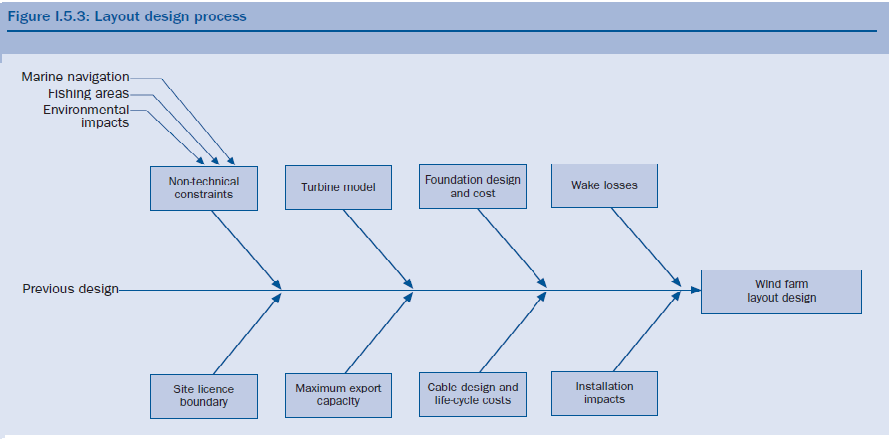MAIN PUBLICATION :
| Home � TECHNOLOGY � Offshore � Wind farm design offshore � Layout |

|
Layout
The process for designing the layout of an offshore wind farm is similar to the process for an onshore wind farm, albeit with different drivers. Once the site is secured by a developer, the constraints and known data on the site are evaluated and input in the layout design, as shown in Figure I.5.5.
Figure 5.5: Layout Design Process
One driver that often dominates onshore wind farm design is the acoustic noise footprint of the project, which is not usually an issue for offshore projects.
The layout design process evaluates and compares layout options in relation to technical feasibility, overall capital cost and the predicted energy production.
Determining the optimum layout for an offshore wind farm involves many tradeoffs. One example of such a tradeoff is related to the array spacing, where a balance must be struck between array losses, that is to say, energy production, and electrical system costs and efficiency. Several other such tradeoffs exist.
The experience to date is that for sites of homogeneous depth and soil properties, revenue, hence production, has a dominant impact on the cost of energy, and as a result the design of the layout is dictated by energy production. However, where the water depth and soil properties vary widely across a site, more complex tradeoffs must be made between production, electrical system costs and support structure costs, including installation costs.
| << Wind turbine selection | Offshore support structures >> |
| Acknowledgements | Sitemap | Partners | Disclaimer | Contact | ||
|
coordinated by  |
supported by  |
The sole responsibility for the content of this webpage lies with the authors. It does not necessarily reflect the opinion of the European Communities. The European Commission is not responsible for any use that maybe made of the information contained therein. |

